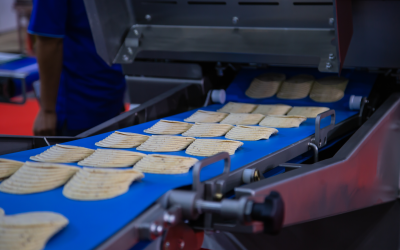Bacteria are the stars of the show when it comes to food safety microbiology. You can’t have a conversation about food safety, and not bring up bacteria- the average consumer has at least heard of E. coli and probably know it has something to do with food safety. Parasites on the other hand, are kind of overlooked and forgotten about (which I think is a shame, because they are some of the most interesting organisms!). Let’s first start with some basic definitions to wrap our heads around this complicated group.
Parasites are organisms that live on or inside of a host, and gain nutrition at the expense of the host. Hosts can be a variety of organisms: humans, animals, and even plants. There are three main classes of parasites that can cause disease in humans: protozoa, helminths, and ectoparasites (CDC, 2020). We won’t get into ectoparasites (organisms like ticks) because they aren’t really responsible for foodborne infections. Protozoa are eukaryotic single celled organisms (not to be confused with bacteria, which are prokaryotes). Protozoa can be parasitic or free-living, and have the ability to reproduce in the host. Protozoa are classified on how they move (or don’t move). Helminths are worms, and are multicellular organisms. Flat worms and round worms are the helminths of food safety significance. You can see some worms with the naked eye, but you need a microscope to see protozoa. Some parasites require only one host, while other parasites might require multiple hosts to complete their full life cycle.
Common Foodborne Parasites:
Giardia duodenalis: Protozoan
Infective Stage: Cyst
Hosts: Humans, animals
Vehicle of Transmission: Contaminated water and rarely undercooked meat
Cryptosporidium parvum: Protozoan
Infective Stage: Oocyst
Hosts: Humans, other vertebrate animals
Vehicle of Transmission: Contaminated food, soil, water, or surfaces
Cyclospora cayetenensis: Protozoan
Infective Stage: Sporulated Oocyst
Host: Humans
Vehicle of Transmission: Contaminated food (Commonly Raspberries, Cilantro, and Basil) or water
Toxoplasma gondii: Protozoan
Infective Stage: Sporulated Oocyst
Definitive Host: Family Felidae (Domestic Cats)
Intermediate Host: Birds and Rodents
End Stage Host: Humans
Vehicle of Transmission: Undercooked meat containing cysts, food or water contaminated by environmental samples, blood transfusion, and transplacental
Trichinella spiralis: Helminth
Infective Stage: Encysted larva in striated muscle
Domestic Cycle: Pigs and Rodents
Sylvatic Cycle: Bear, Moose, Boar, and other animals
Vehicle of Transmission: Undercooked meat containing cysts
Taenia saginata: Helminth
Infective Stage: Eggs or gravid proglottids
Intermediate Host: Cattle
Definitive Host: Humans
Vehicle of Transmission: Undercooked meat containing oncospheres
Taenia solium: Helminth
Infective Stage: Eggs or gravid proglottids
Intermediate Host: Swine
Definitive Host: Humans
Vehicle of Transmission: Undercooked meat containing oncospheres
As you can probably see, what all of these organisms have in common is the complexity in their life cycles. This complexity makes it challenging to cultivate parasites. Bacteria (and even yeasts and molds) are easier to enumerate and isolate compared to parasites. A nutrient broth can be mixed with a sample, incubated at the appropriate temperature, and then there is exponential growth of the bacterial organisms. Growing specific strains of bacteria is also very easy. A strain is struck to the appropriate agar from freezer storage, and there is growth on the agar plate after incubation. Parasites require a host for reproduction and survival. If we were to incubate a sample that had Giardia spores with a nutrient agar, there would be no reproduction of the Giardia. In order to cultivate parasites, you have to replicate their lifecycles in nature, which all involve an animal host. These parasites have complex life-cycles, sometimes with multiple hosts (that can be warm blooded and cold blooded!). Parasites have different morphological life stages required for infection. There are many other variables once inside the host required for replication, including host temperature, host site, host immune response, parasite strains, and parasite forms (Ahmed, 2014). All of these factors make cultivation and testing of parasites in food products more difficult than testing for bacterial organisms. Testing is available for these parasitic organisms, but isn’t used as commonly as bacterial testing (this is also related prevalence and risk of parasitic contamination in food products). The complexity of parasitic life cycles also makes performing challenge studies or validation studies a little difficult. Where do you obtain the parasitic organism from? How do you then cultivate the organism to ensure that there is enough for inoculation of the product? Will there be enough of the parasite in the food product for detection? The complexity of parasites makes them very intriguing, but in turn makes them more challenging to work with in a lab setting.
If you enjoyed reading about parasites today, please be on the lookout for the newsletter next quarter where we dive deeper into some protozoan parasites!
References
Ahmed N. H. (2014). Cultivation of parasites. Tropical parasitology, 4(2), 80–89. https://doi.org/10.4103/2229-5070.138534
CDC – DPDx – Parasites A-Z Index. (2019, November 20). Retrieved October 30, 2020, from https://www.cdc.gov/dpdx/az.html
CDC – Parasites – About Parasites. (2020, September 18). Retrieved October 29, 2020, from https://www.cdc.gov/parasites/about.html
FSIS. (2017, September 1). Retrieved October 30, 2020, from https://www.fsis.usda.gov/wps/portal/fsis/topics/food-safety-education/get-answers/food-safety-fact-sheets/foodborne-illness-and-disease/parasites-and-foodborne-illness/ct_index



